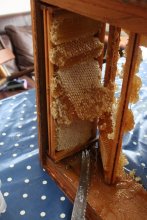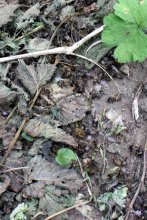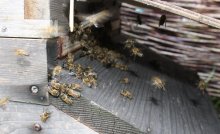June Harvest
On Sunday I harvested two supers of honey from Colony 1. They had filled three supers during the spring and had started building comb on top of the crown board.
Harvesting is fairly straightforward now. Cut; spin; strain; put into containers. Easy.
- Read more about June Harvest
- Log in or register to post comments



